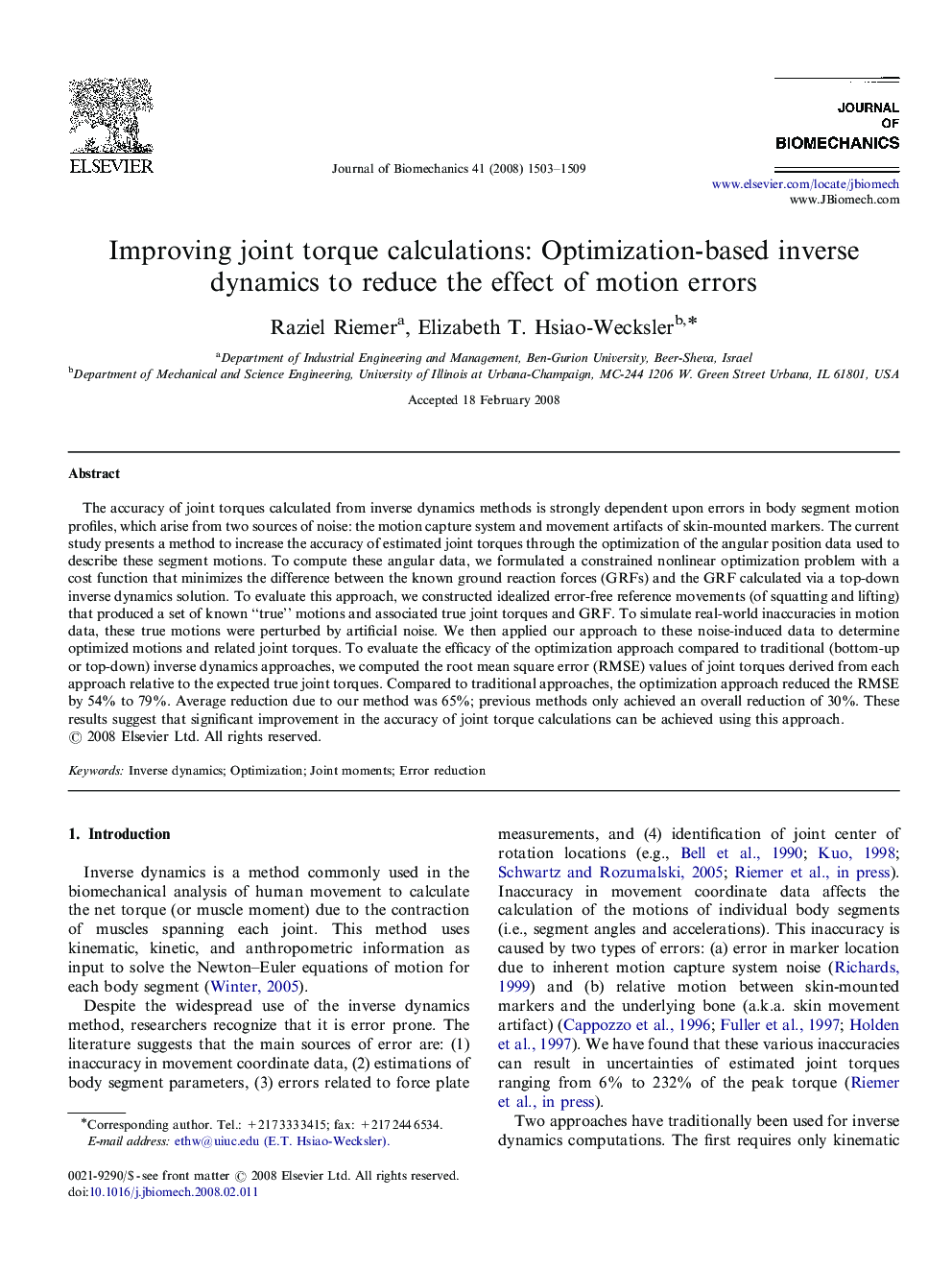| Article ID | Journal | Published Year | Pages | File Type |
|---|---|---|---|---|
| 875276 | Journal of Biomechanics | 2008 | 7 Pages |
The accuracy of joint torques calculated from inverse dynamics methods is strongly dependent upon errors in body segment motion profiles, which arise from two sources of noise: the motion capture system and movement artifacts of skin-mounted markers. The current study presents a method to increase the accuracy of estimated joint torques through the optimization of the angular position data used to describe these segment motions. To compute these angular data, we formulated a constrained nonlinear optimization problem with a cost function that minimizes the difference between the known ground reaction forces (GRFs) and the GRF calculated via a top-down inverse dynamics solution. To evaluate this approach, we constructed idealized error-free reference movements (of squatting and lifting) that produced a set of known “true” motions and associated true joint torques and GRF. To simulate real-world inaccuracies in motion data, these true motions were perturbed by artificial noise. We then applied our approach to these noise-induced data to determine optimized motions and related joint torques. To evaluate the efficacy of the optimization approach compared to traditional (bottom-up or top-down) inverse dynamics approaches, we computed the root mean square error (RMSE) values of joint torques derived from each approach relative to the expected true joint torques. Compared to traditional approaches, the optimization approach reduced the RMSE by 54% to 79%. Average reduction due to our method was 65%; previous methods only achieved an overall reduction of 30%. These results suggest that significant improvement in the accuracy of joint torque calculations can be achieved using this approach.
